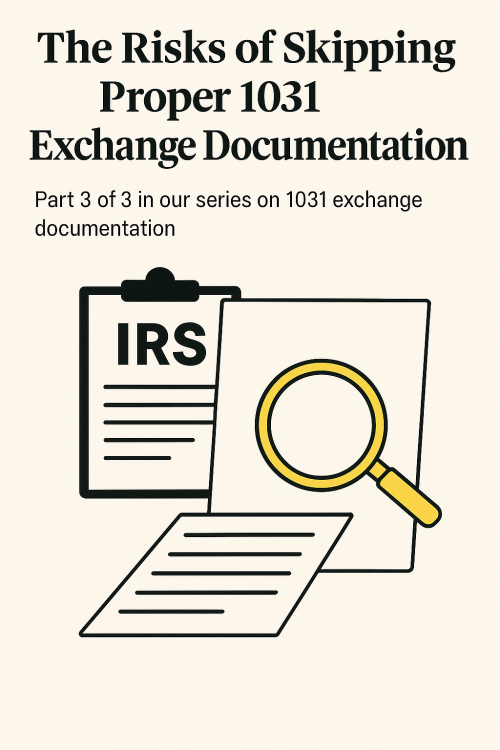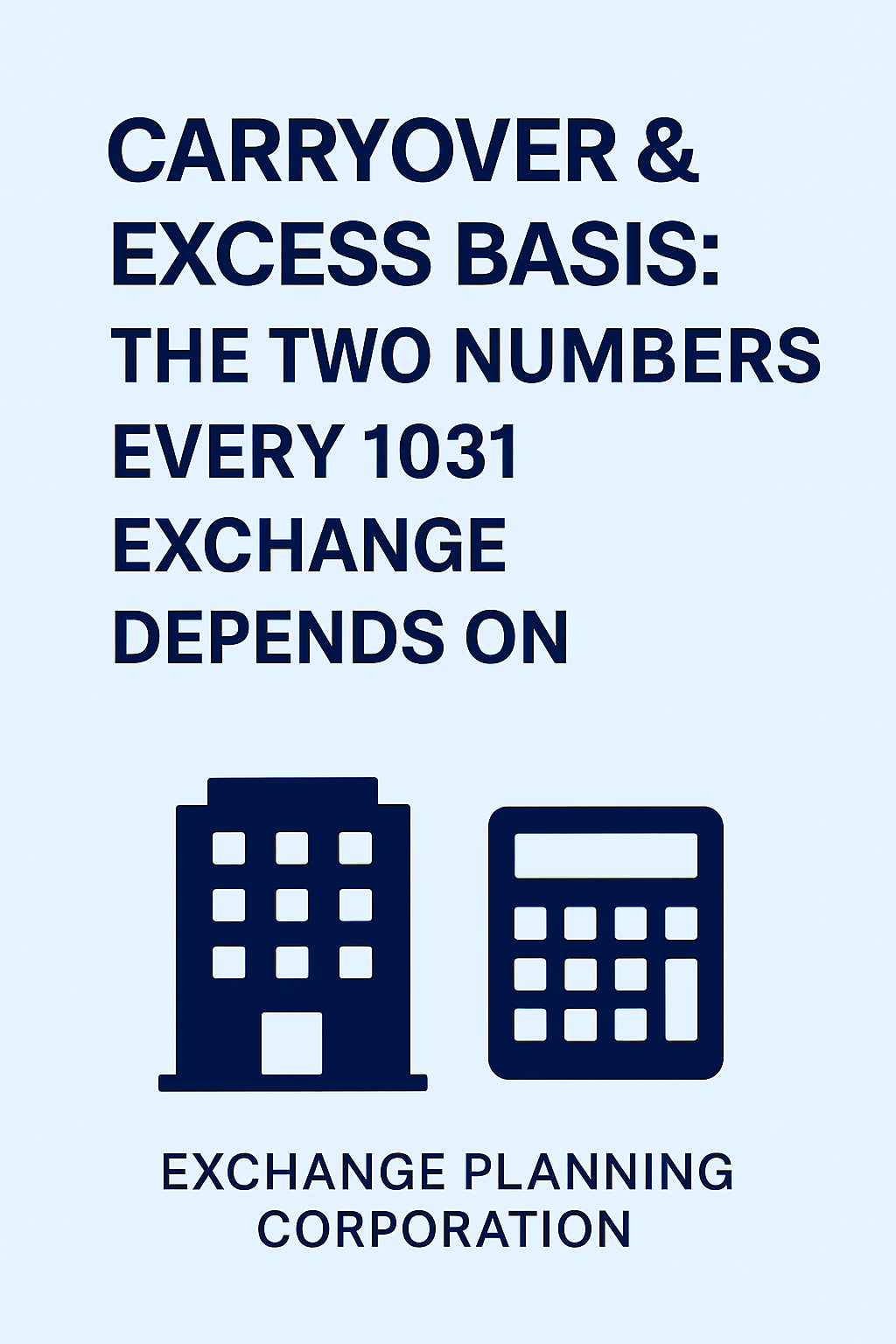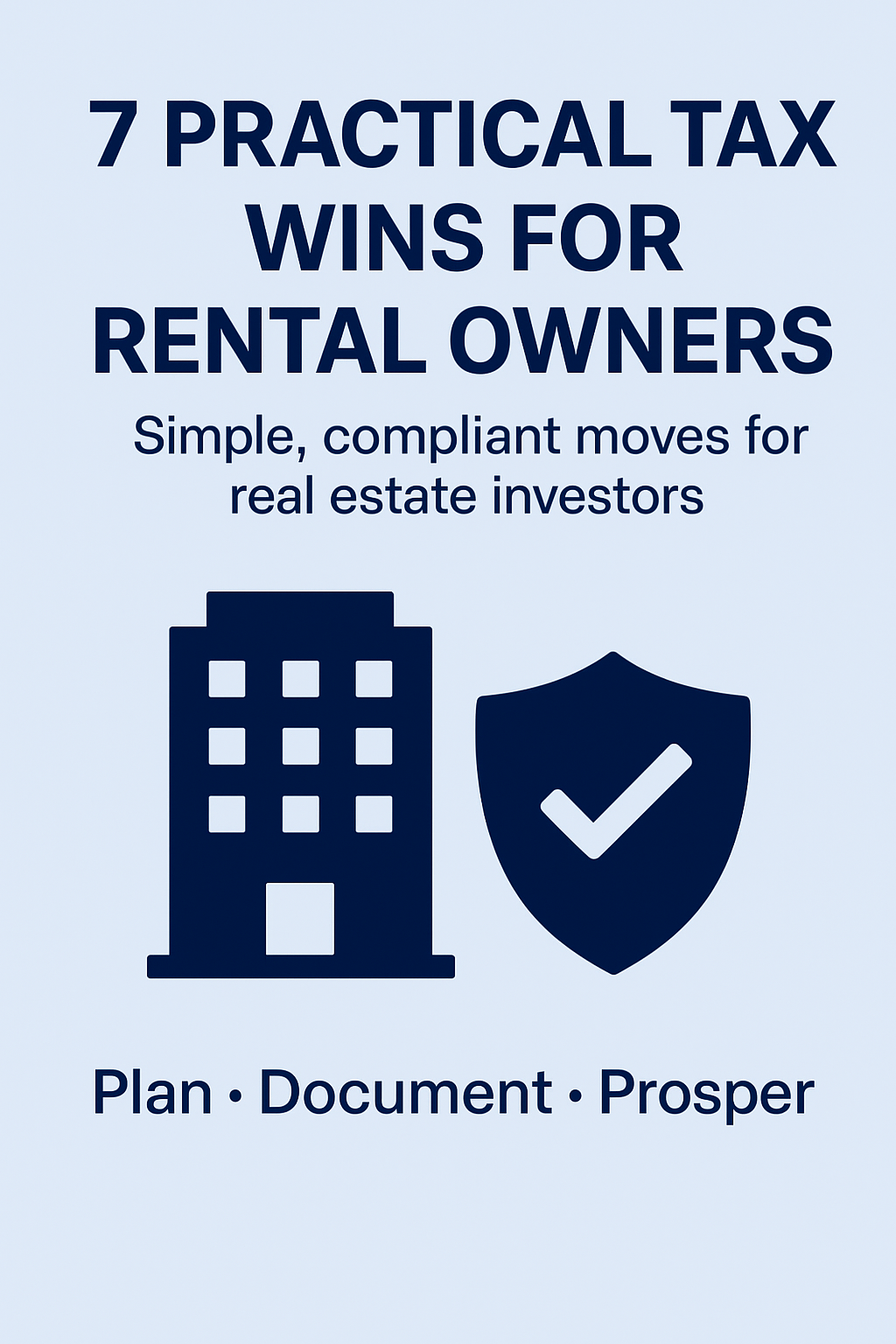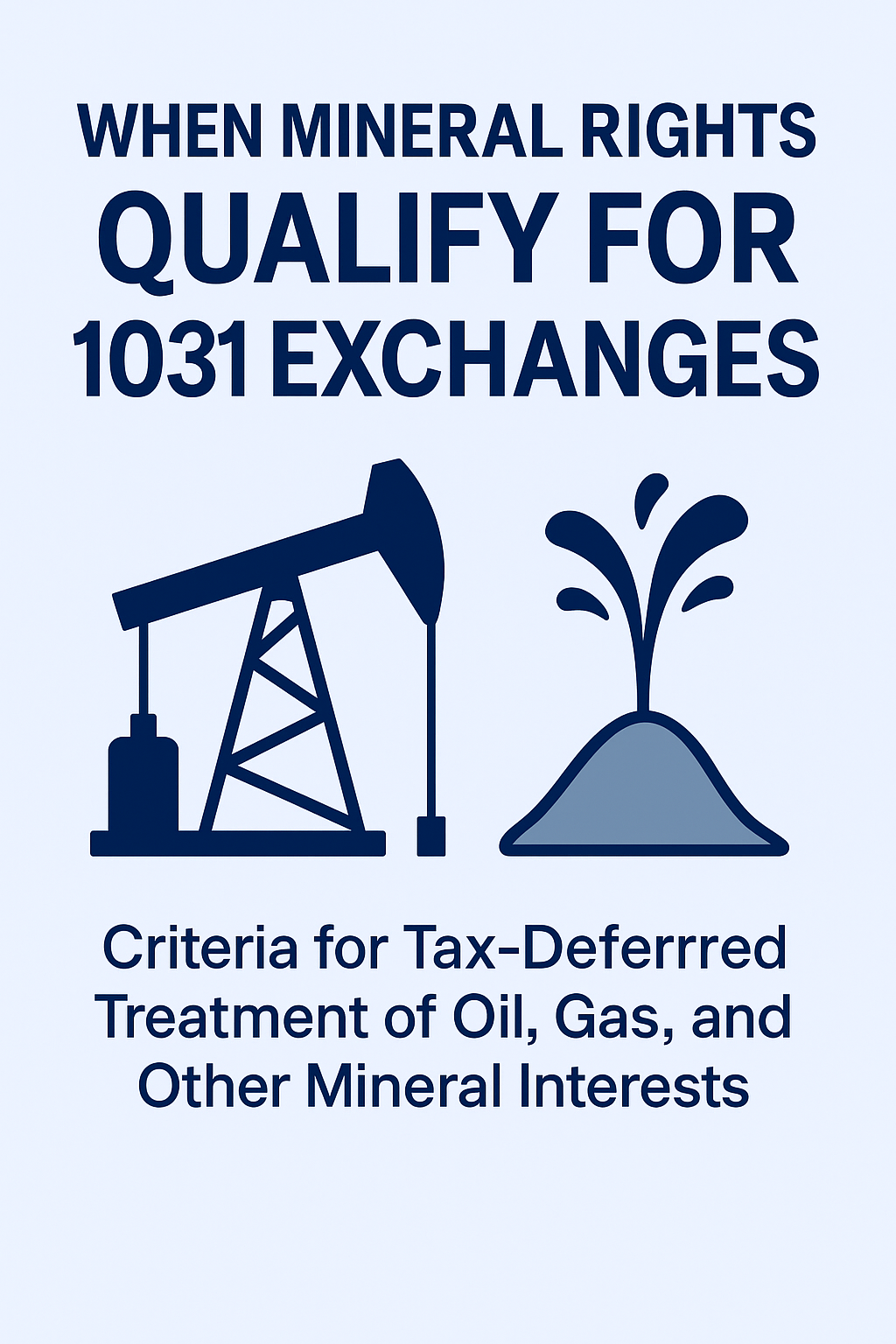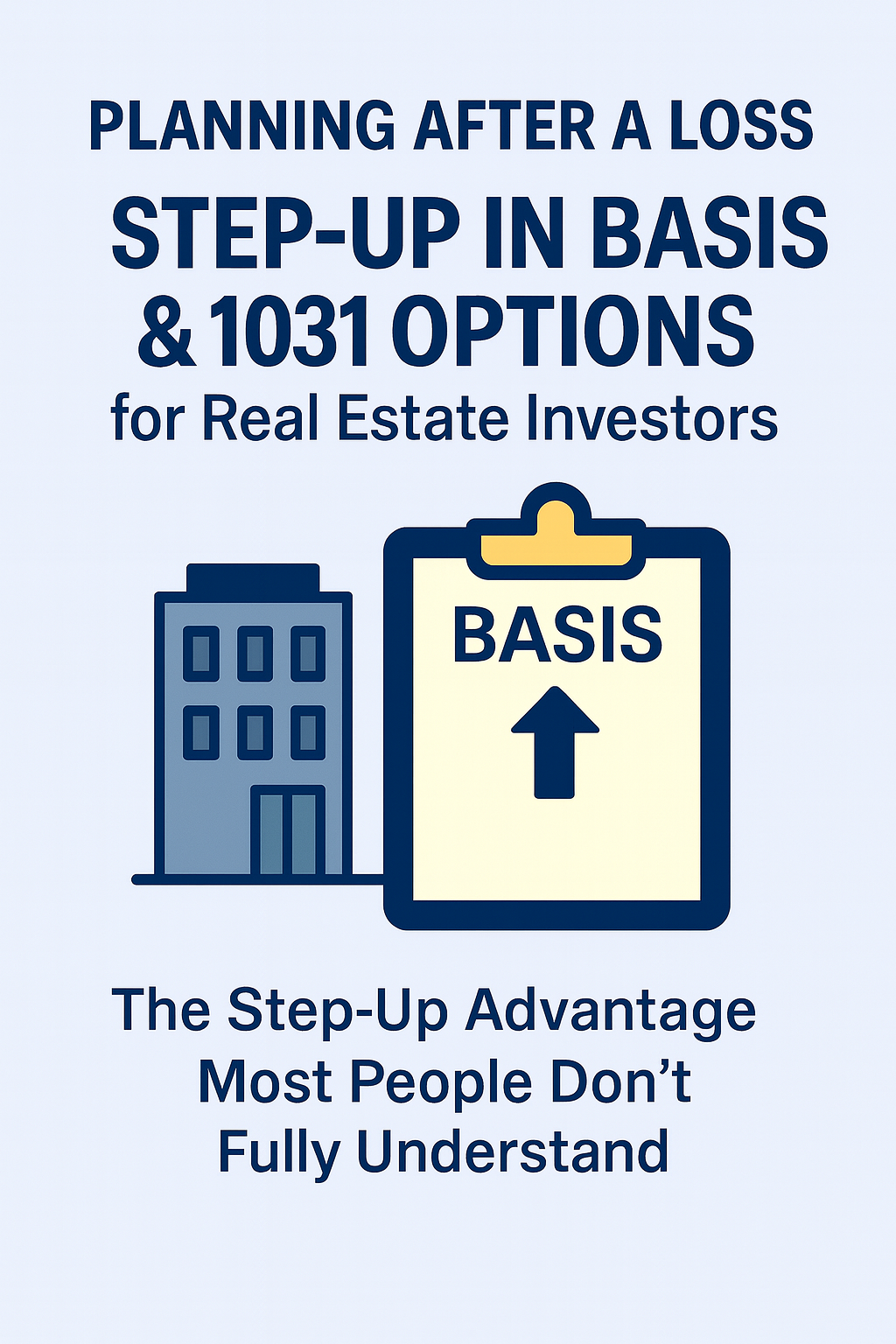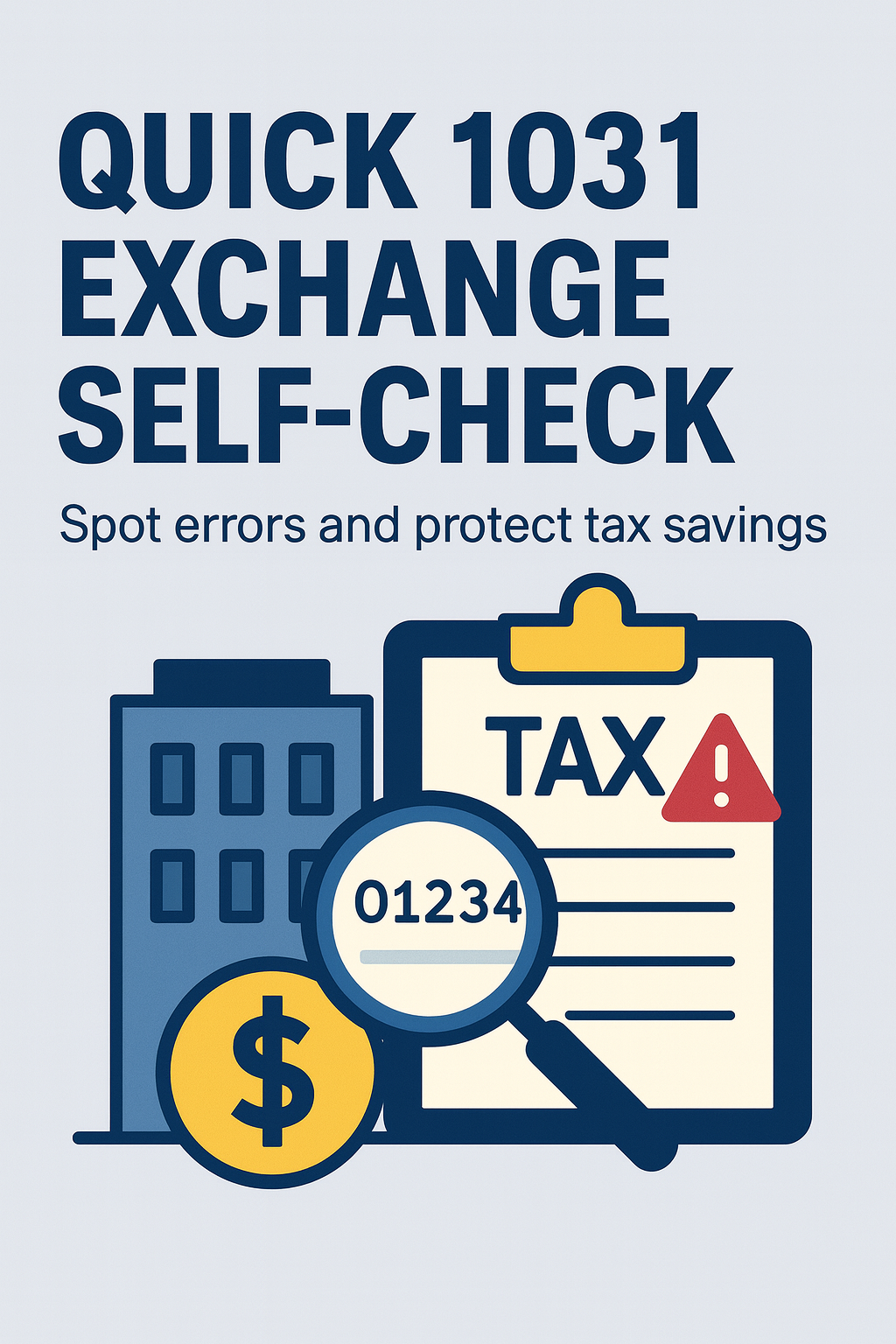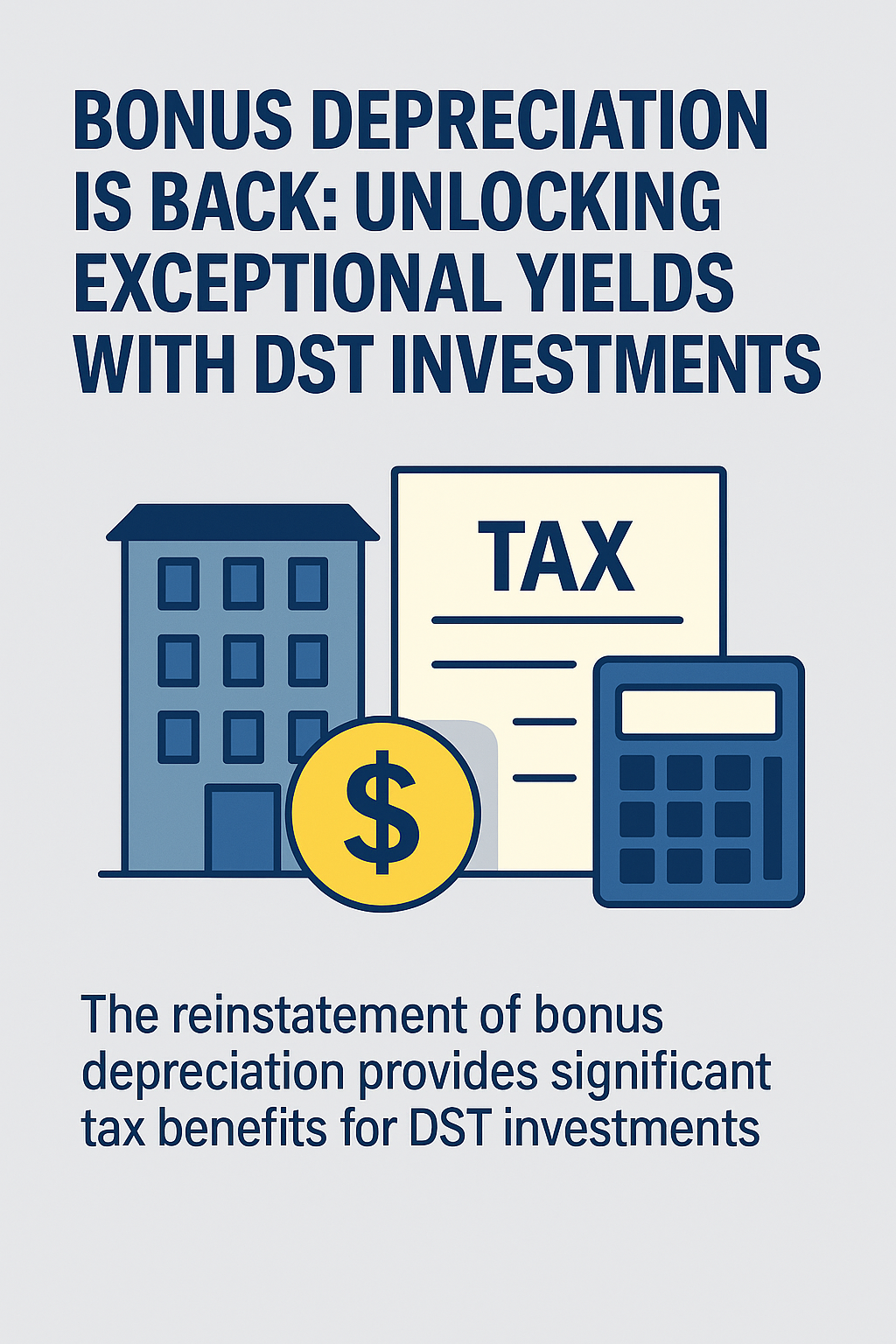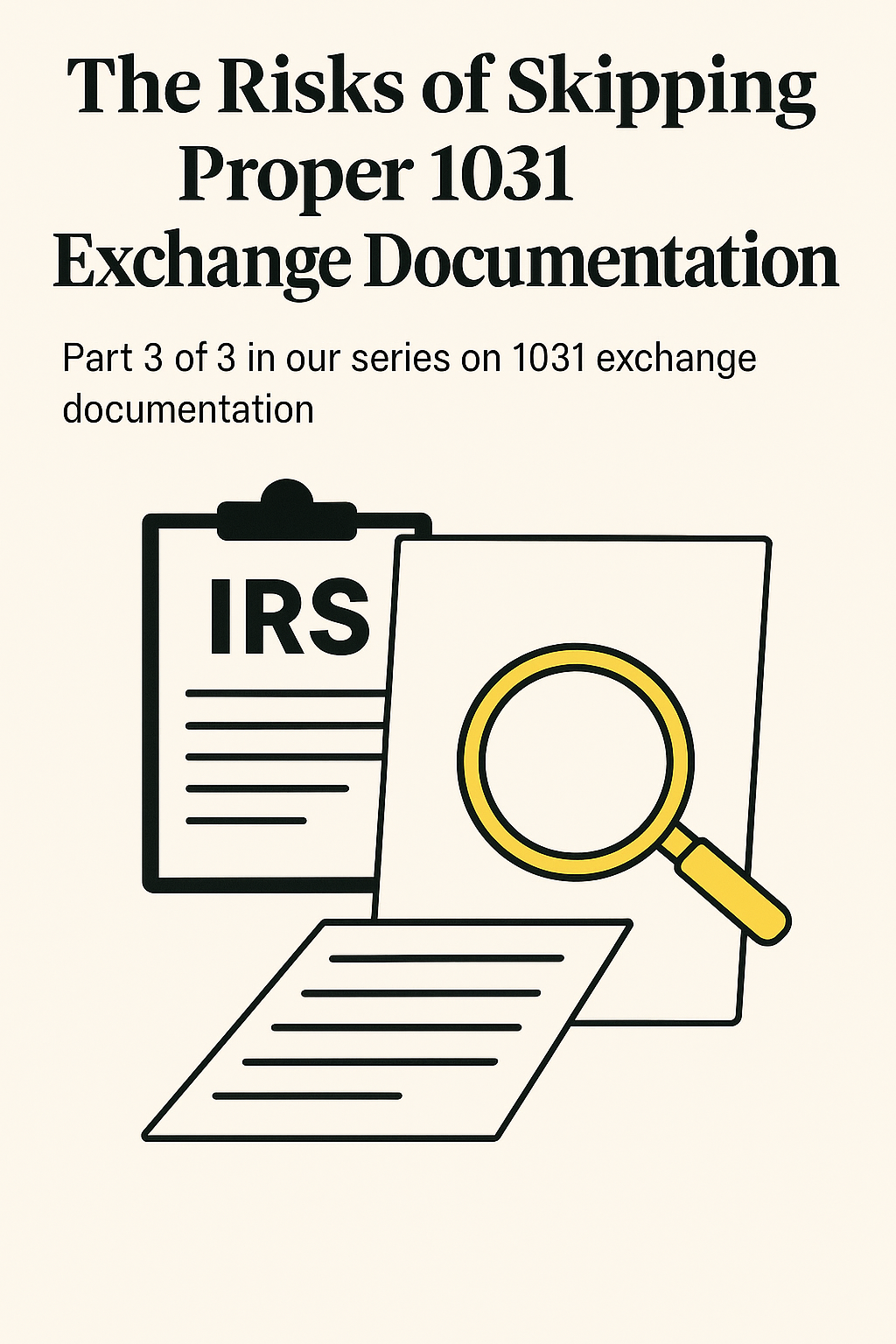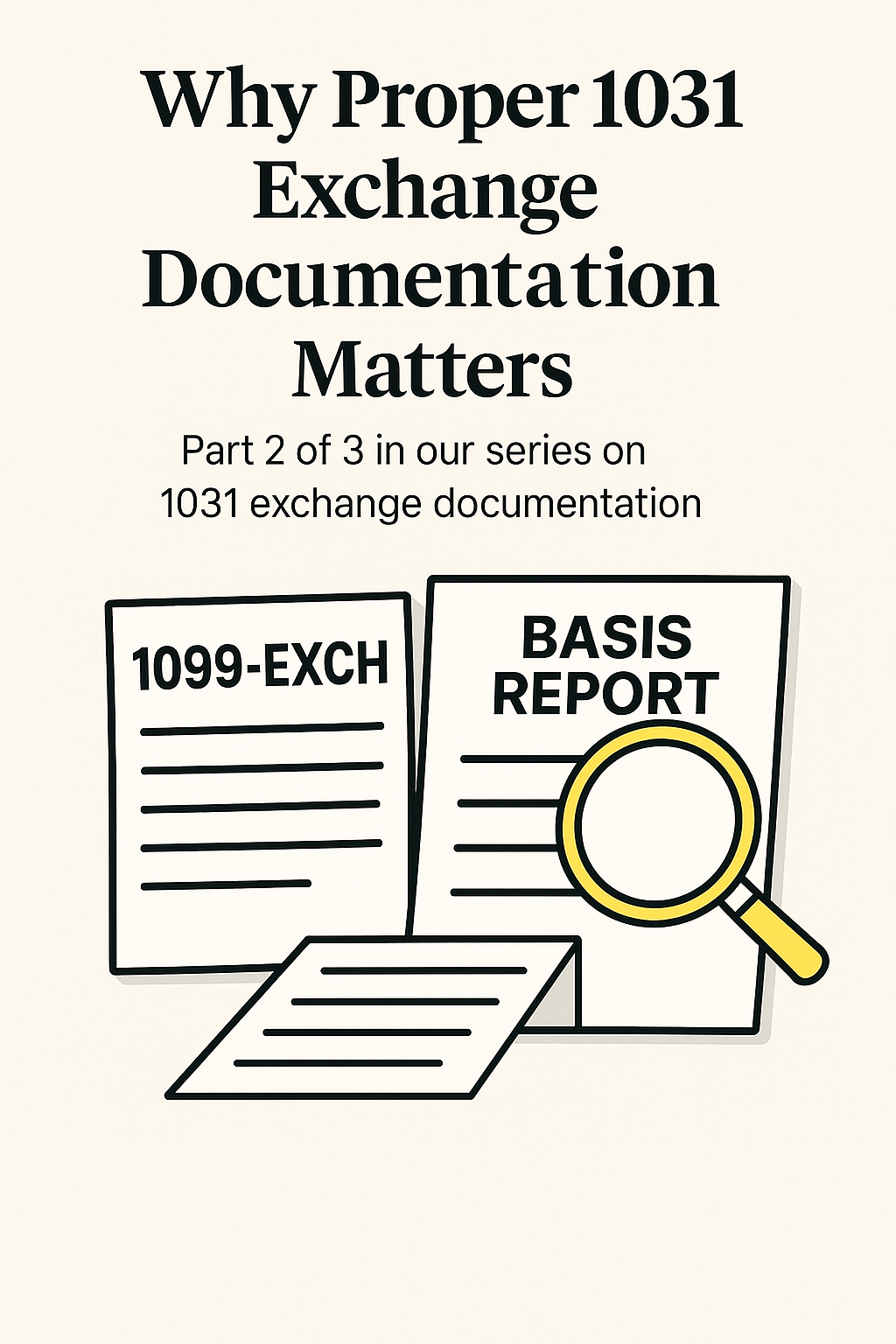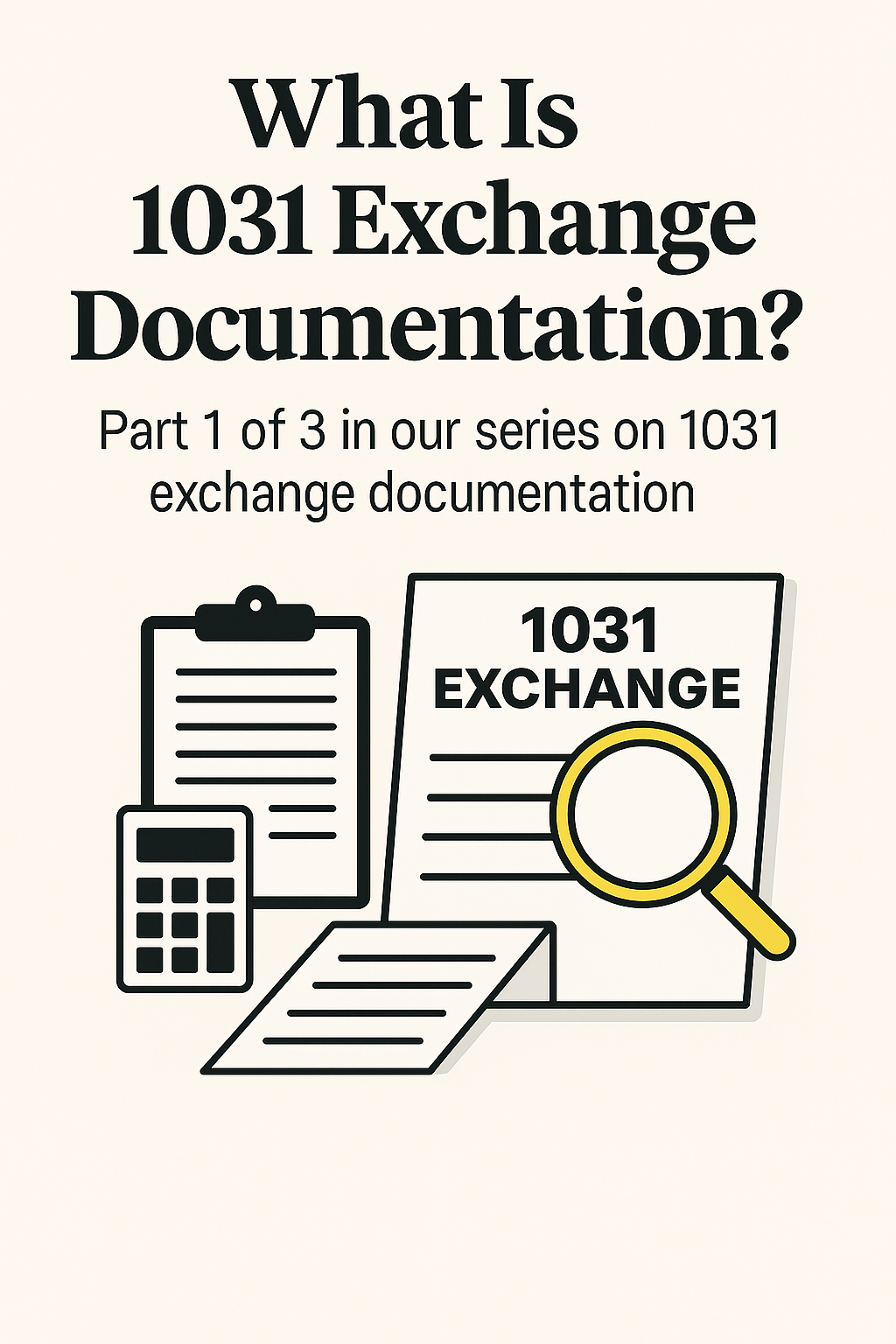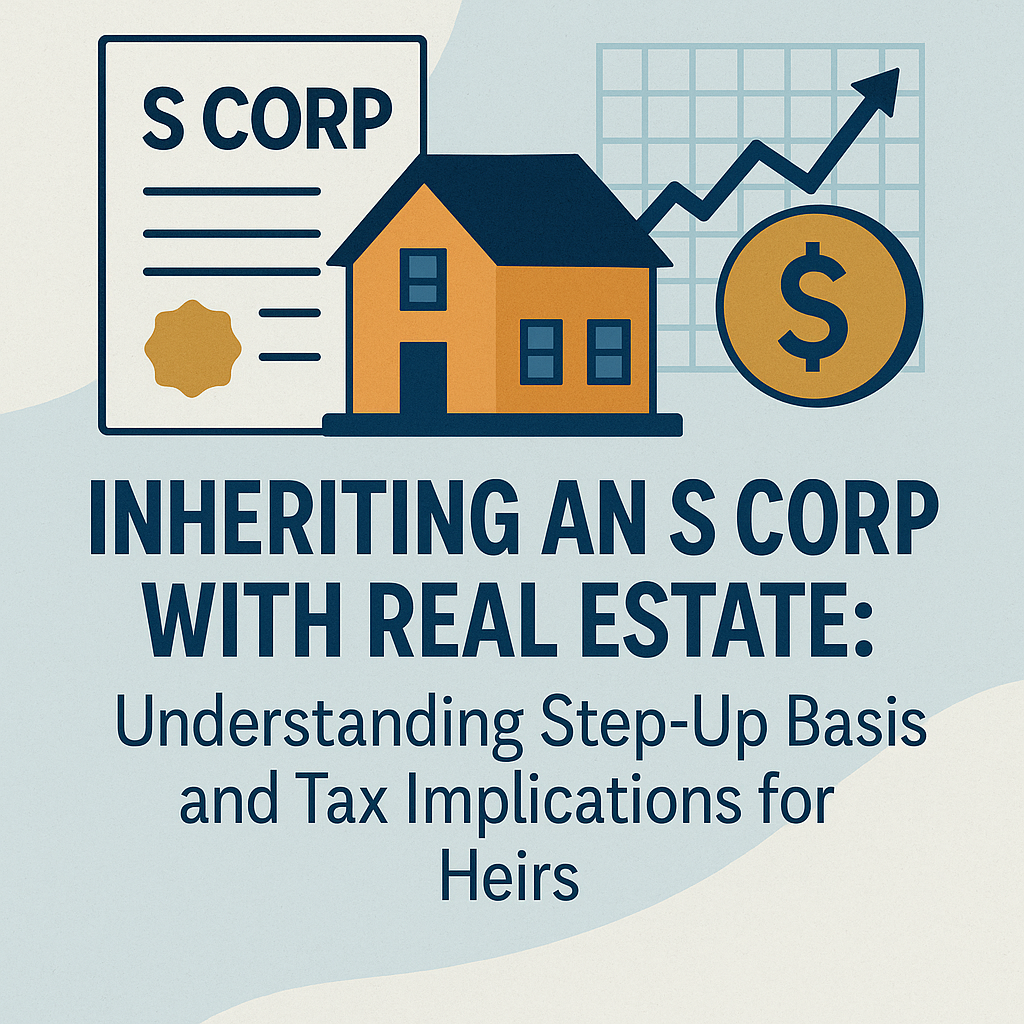Part 3 of 3 in our series on 1031 exchange documentation.
After seeing what exchange documentation is and why it matters, it’s time to confront the flip side: What happens if you don’t document your 1031 exchange properly? Unfortunately, the consequences can be serious. We’ve touched on an example in part one of this series – now let’s lay out the key risks an investor faces by skipping or mishandling this crucial step. These aren’t scare tactics; they’re real outcomes that real investors have experienced (and which you can easily avoid with the right approach).
- Surprise Tax Bills from “Hidden” Profit: If parts of your sale aren’t documented correctly, you could owe taxes on money you never actually profited from. For instance, routine closing adjustments – like prorated rents, transferring a tenant’s security deposit, or paying off some accrued property expenses – can look like income in the eyes of the IRS if not properly offset. We’ve seen cases where an investor would have paid taxes on over $50,000 of such adjustments simply because the exchange was reported in a cookie-cutter way. That’s a huge and unnecessary tax hit that proper documentation would have prevented.
- Losing Future Tax Deductions: An incorrectly documented exchange can haunt you long after the deal itself. How? By messing up the tax basis calculation on your new property. Your depreciation (the yearly deduction you get for wear-and-tear on the property) is based on that basis. If it’s calculated too low because the exchange wasn’t reported right, you’ll get smaller depreciation write-offs each year than you deserve. Over time, those missed deductions add up to thousands of dollars in extra taxes. In other words, you’d be volunteering to pay higher taxes on your rental income for years to come because of one paperwork mistake.
- Missed Write-Offs on Transaction Costs: Certain expenses related to selling your property or buying the new one can be immediately written off – but only if they’re identified and separated from the exchange properly. A common example is a loan payoff penalty or prepayment fee when you sold the old property. Often, that kind of fee is tax-deductible as an interest expense. But if your exchange reporting just lumps that cost into the overall sale without calling it out, you lose that deduction. We’ve encountered investors who unknowingly gave up large deductions for costs like these, essentially over-reporting their income and overpaying taxes. Proper documentation flags these items so you can deduct what you’re entitled to.
As you can see, failing to properly document a 1031 exchange can lead to immediate tax bills, lost tax benefits down the road, and increased scrutiny from tax authorities. The good news is that all of these pitfalls are completely avoidable. By taking documentation seriously – ideally with the help of specialists – you can virtually eliminate the risk of these outcomes.
Throughout this three-part series, we’ve stressed one central message: a 1031 exchange isn’t truly complete until it’s correctly documented. The difference between thinking you saved on taxes and knowing you did comes down to this step. The risks of skipping it just aren’t worth it, especially when the solution is straightforward.
So, what’s next? If you’ve made it this far, you’re already a savvy investor who wants to do things right. The next step is simple: make sure your own exchange is documented the right way. Maybe you’re currently in the middle of an exchange, or maybe you completed one recently and this is the first time you’re hearing about all these details. Either way, it’s not too late to act. Reach out to Exchange Planning Corporation – even if it’s just to ask a question. We’ll gladly explain what should be done for your specific situation, and if you need our help, we’re ready to provide it.
At EPC, we’ve got your back. Our entire mission is to help investors like you keep what you’ve earned by ensuring compliance and clarity in 1031 exchanges. Think of it as a small investment in peace of mind: the cost of getting documentation help is usually tiny compared to the taxes it can save or the troubles it can avert.
You’ve worked hard to build and swap your real estate portfolio tax-efficiently. Now, make sure those efforts are fully protected. A quick conversation with our team can confirm that you’re in good shape or highlight any corrections needed before they become problems. Don’t wait for an IRS letter or a missed deduction to reveal an issue.
Wrapping up the series: We hope this series has shed light on a part of 1031 exchanges that often flies under the radar, and that you feel more empowered as an investor. Proper documentation might not be the most glamorous part of real estate investing, but it’s one of the most impactful when it comes to preserving your wealth.
In the end, the takeaway is simple – dot the i’s and cross the t’s on your exchange so you can enjoy the profits without worry. If you have any doubts or need expert support, remember that EPC is just a phone call or email away. We’re here to help ensure your 1031 exchange is not just a good move, but a great one, all the way through the finish line.
We’re here to help make sure that happens. Email ExchangeServices@EPC1031.com or call (424) 277-6763 today

